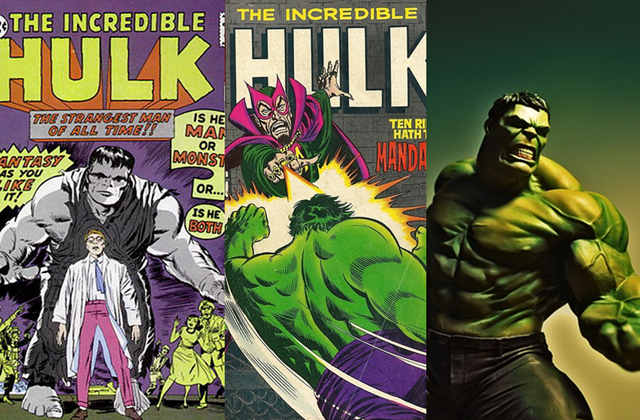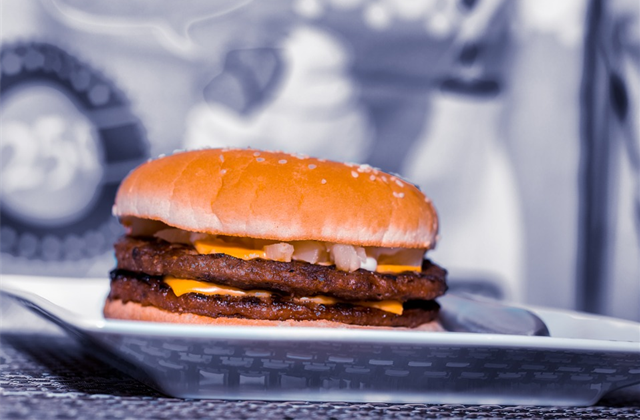In a move borne of both comic idolatry and borderline comedic obsession, but for the consequences, in a bid to look like his idol, the Hulk, bodybuilder Romario Dos Santos Alves injected his muscles with synthol. Over the course of three years he did this in order to make his himself appear more muscular.
The 25-year-old did manage to achieve biceps of 25 inches.
However, while not quite turning green, his arms did begin to harden like rock and at one stage doctors thought his arms would need to be amputated.
Just as well he wasn’t obsessed with the characters such as the Thing and Jax as well.
Luckily for Alves, amputating his arms was avoided, and he has reportedly been clean of synthol for two years now. His tale is one of caution and also of dealing with the addiction and depression related to his pursuit of bodybuilding and injecting synthol for results.
His story though, is not isolated, and is somewhat like that of Moustafa Ismail. Whom is recorded as having 31 inch biceps. (Technically it’s the circumference around the whole upper arm including the triceps, with the bicep flexed and measured at its peak.)
To put that into perspective, at 31 inches his upper arm is roughly the same circumference as a fairly lean adult male’s waist.
Dubbed “the Egyptian Popeye” – a misnomer because it was actually Popeye’s forearms which were disproportionately huge – Moustafa Ismail’s arms caused such an uproar amidst claims of him injecting synthol (amongst other things) that the Guinness World Records chose to discontinue its record for the largest upper arm circumference in response.
Ismail insists his huge arms are the result of lots of weightlifting and eating even more protein.
At least Alves did not dispute his hulking physique was not entirely au naturel. Nor did he try microwaving his arms, or some other such thing, in the misguided hope of being exposed to gamma radiation for a better body.
However, while the Hulk may be fantastical, his earlier incarnations were somewhat more credible than the character’s incredible musculature of modern times.
The superhero is not alone in this transformation either.
In his bodybuilding heyday (and yes, steroids helped), Arnold Schwarzenegger had biceps measuring over 22 inches.
Lou Ferrigno, who played the Hulk on the original television series The Incredible Hulk, boasted un-pumped biceps of around 22.75 inches.
Here’s where it gets more interesting, in the perception of what constitutes a hyper-muscular male and how it has shifted over time.
Peter McAllister, in Manthropology (2009), cites studies recording the changes in male action figures with respect to their muscularity. Noting that the 1982 version of G.I. Joe’s Sgt. Savage action figure, if scaled up in proportion to the average male’s height, would’ve had biceps measuring about 12.5 inches. Which is only slightly more muscular than the size of the average male’s actual biceps, which measure in around 11.5 inches.
Fast forward to the Sgt. Savage Extreme action figure of 1998, and again upscaling it to the height of the average male, would’ve resulted in biceps measuring 40 inches.
Neither the arms of Arnie or Lou ever came even remotely close to this size.
It also just so happens, this 40 inch measurement is Ismail’s next goal for his biceps. To be achieved naturally, no doubt.
McAllister also notes bodybuilder Gregg Valentino, with his 28 inch biceps. His arms could also be referred to as enhanced. However, by similarly upscaling action figures such as Luke Skywalker of Star Wars and characters from Mighty Morphin Power Rangers, they would’ve boasted biceps similarly plastic fantastic and of comparable size to Valentino’s, and they’re fairly ordinary run-of-the-mill male characters not exactly known for their physical strength.
Furthermore, even Mattel’s Ken (of Barbie fame), proportionately would have a chest circumference more muscular than about 95 percent of most real men.
And these aren’t even enormous green rage monsters and the strongest superhero there is. Not that the Hulk has lagged behind either. Just look at the transition of the character’s physique, in the feature image of this article as an example. From originally being kind of puffy and big (and grey), to freakishly and monstrously muscled (complete with definition suggestive of body fat well under 10 percent).
Which is not to suggest blaming the toys and comics, because they are more likely to be changing with societal perceptions, rather than be necessarily causing such shifts.
The Harvard Review of Psychiatry estimated that around 1 million males in the USA suffer from Body Dysmorphic Disorder (see Olivardia, Pope, Harrison, Borowiecki, and Cohane, 2004). Whilst it can manifest in many ways and is based upon perceived flaws in one’s appearance, a major symptom of it is the obsession linked with wanting to be more muscular.
Whether Alves falls into such a category, watch and see:
Yet looking at the video, does such an appearance actually convey an image of strength or is it merely a freakish illusion readily seen through?
Alves himself said:
“Sometimes kids will come up to me and say that I look like the Incredible Hulk and hug me and have their photo taken with me. I really like that as I modelled my body on the Incredible Hulk.”
Good idea or not? And should it matter whether he’s referring to the man Lou Ferrigno or the animated CG Hulk of cinema today? Add your answer to uthinki question below:
Feature Image Credit: Wikimedia Commons
 uthinki Considered Opinion?
uthinki Considered Opinion?



